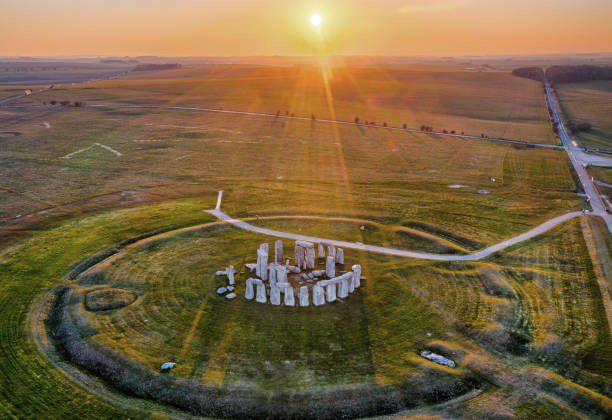Blog 06-Destruction of England’s Greatest Natural Treasure

Stonehenge has gone through at least three phases of use as a religious center.
Phase One was before 3,000 BCE. The area was pristine with no manmade structures. At the end of the last ice age, a glacier carved out a thirty-foot wide, flat-topped natural roadway that ran from today’s Stonehenge site straight for about a mile. The roadway also had ditches carved out on either side. Its orientation aligned with the summer and winter solstices. If you stood at today’s Stonehenge position and looked down the road, the summer sun would rise at the center of the road at the other end. Likewise, the opposite at the winter solstice if you stood at the other end of the road looking back.
This naturally occurring phenomenon was so unusual it acquired a religious significance, attested to by a small amount of archaeological remains. We have no records of what religious beliefs or practices were for the pre-3000 BCE usage.
Around 3000 BCE a people referred to as the Windmill Hill built Phase Two – also called the first phase of today’s Stonehenge. It was a circular arrangement of Bluestone standing stones. They used it as an astronomical calendar, and for the prediction of sun and moon eclipses. Archeological evidence suggest it was built using a layout of rope in a square pattern.
To complete the story, around 2400 BCE, the Windmill Hill people had died out and were replaced by the Beaker People. These people reconstructed Stonehenge to the layout we have inherited today. We know their astronomical practices remained essentially the same as the Windmill Hill people, but their religious practices were never recorded.
Now for the destruction. Today’s archeologists have reconstructed the above. But civil engineers have built roads right through the original roadway carved by the glacier, and the original 3000 BCD Stonehenge. See the picture for the evidence. How much have today’s people lost by modern engineering’s lack of concern for natural, historical and archaeological treasures – we may never know. That is a travesty.
